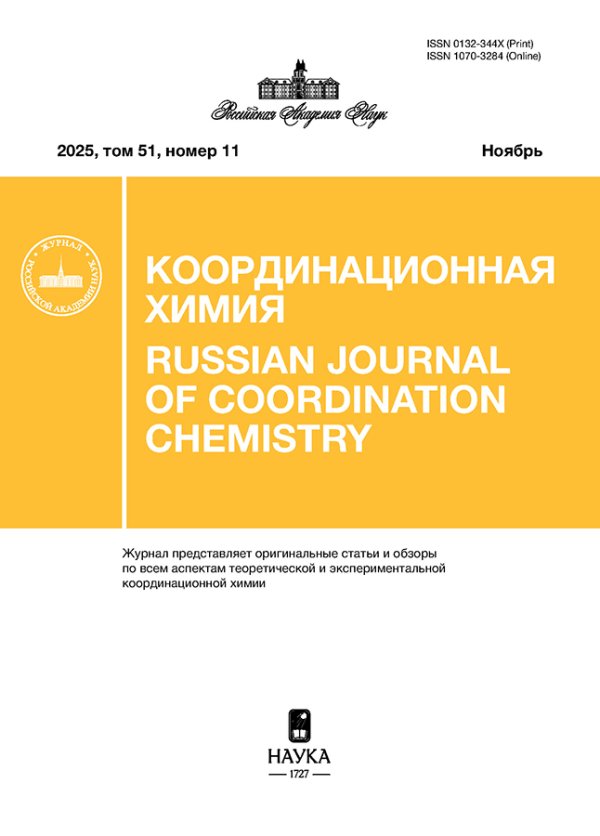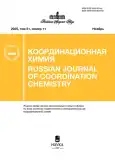Russian Journal of Coordination Chemistry
ISSN (print): 0132-344X
Media registration certificate: № 0110216 от 08.02.1993
Founders: Kurnakov Institute of General and Inorganic Chemistry of RAS, Russian Academy of Sciences
Editor-in-Chief: Eremenko Igor L., academician RAS, Doctor of Sc., Full Professor
Frequency / Access: 12 issues per year / Subscription
Included in: White list (2nd level), Higher Attestation Commission list, RISC
最新一期
卷 51, 编号 11 (2025)
Articles
Alkaline Earth Metal Bisamides Based on Unsymmetrical Acenaphthene-1,2-diimine
摘要
 673-685
673-685


Oxovanadium(IV) Complexes with Pyridinedicarboxylate Anions and Terpyridine: Synthesis, Structure, and EPR Spectra
摘要
 686-702
686-702


First Example of Coordination Polymer Based on Tetrahedral Cluster Cyanocomplex of Rhenium and Barium
摘要
 703-708
703-708


A SIMPLE CATALYST FOR THE SYNTHESIS OF CYCLIC CARBONATES BASED ON ZINC(II) IODIDE
摘要
 709-718
709-718


Supramolecular Lanthanide Complexes with Cucurbituril: Luminescence and Logic Devices
摘要
 719-729
719-729


Synthesis, Structure, and Magnetic Properties of the Binuclear Cobalt Complex [Co2(μ‑O2PPh2)2(Bpy)4](BF4)2
摘要
 730-738
730-738












